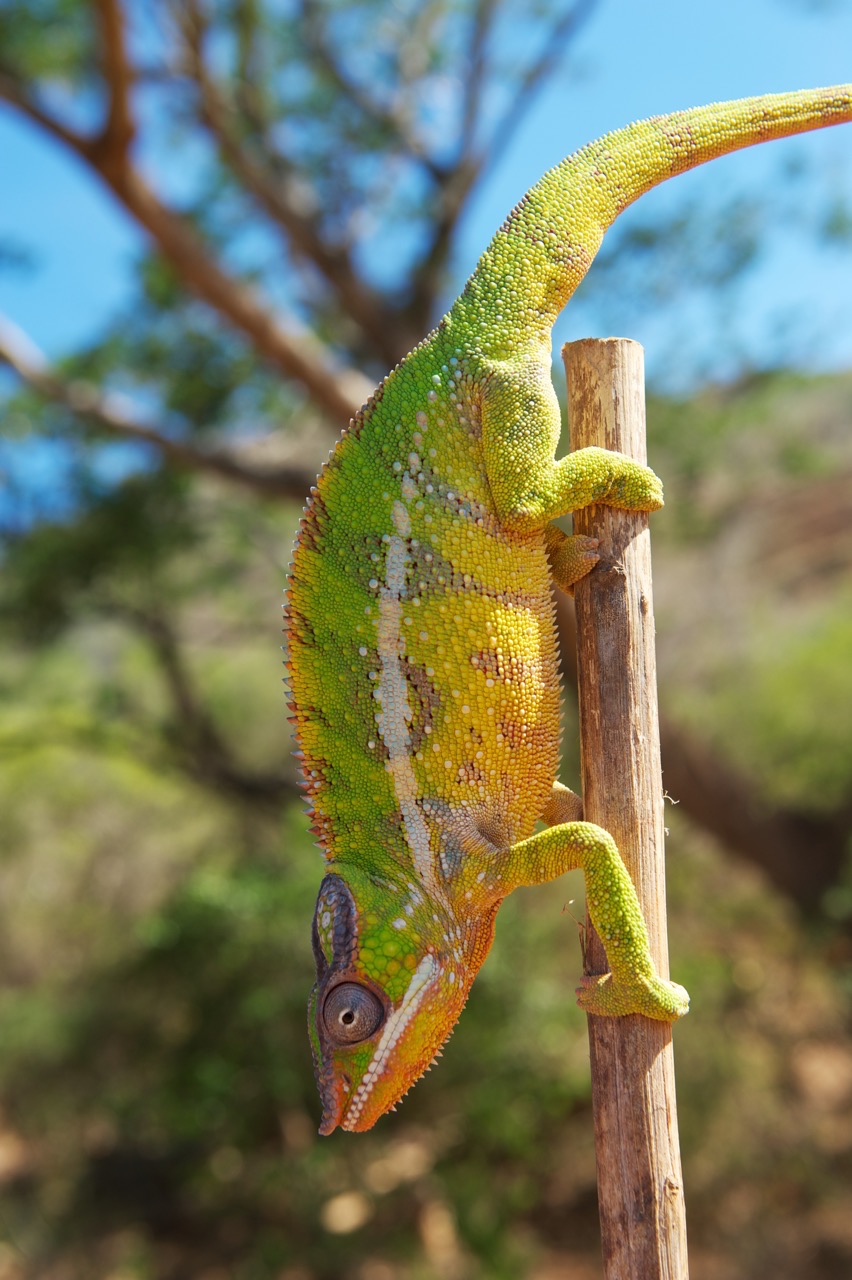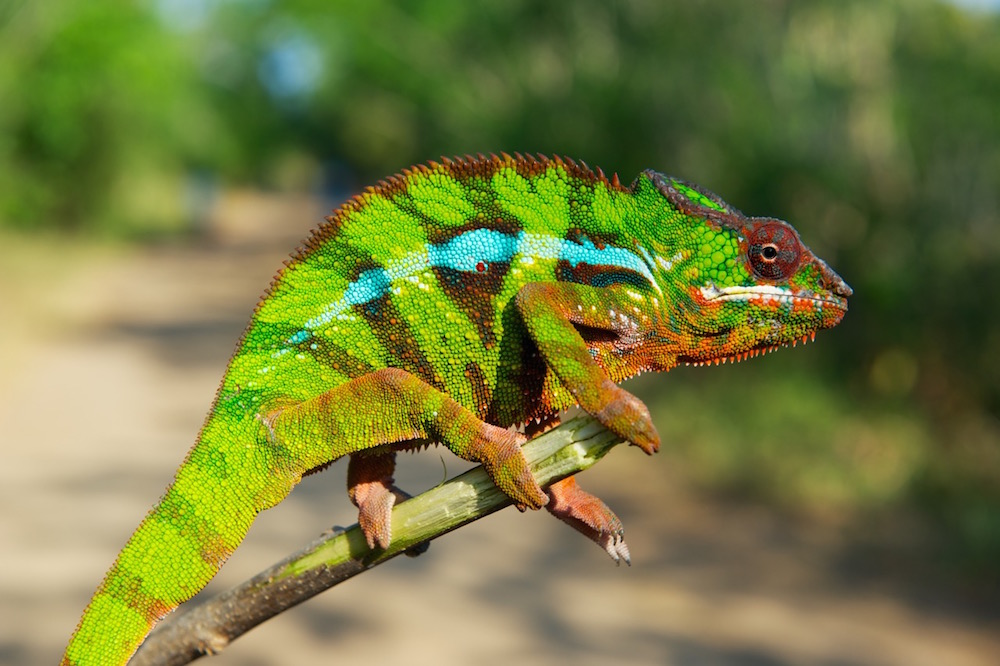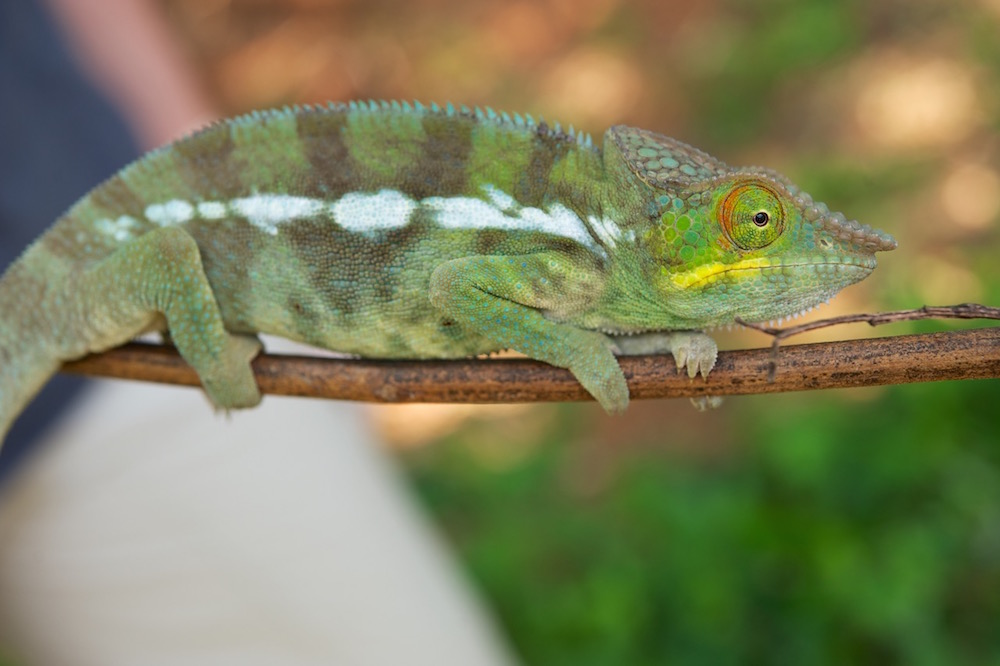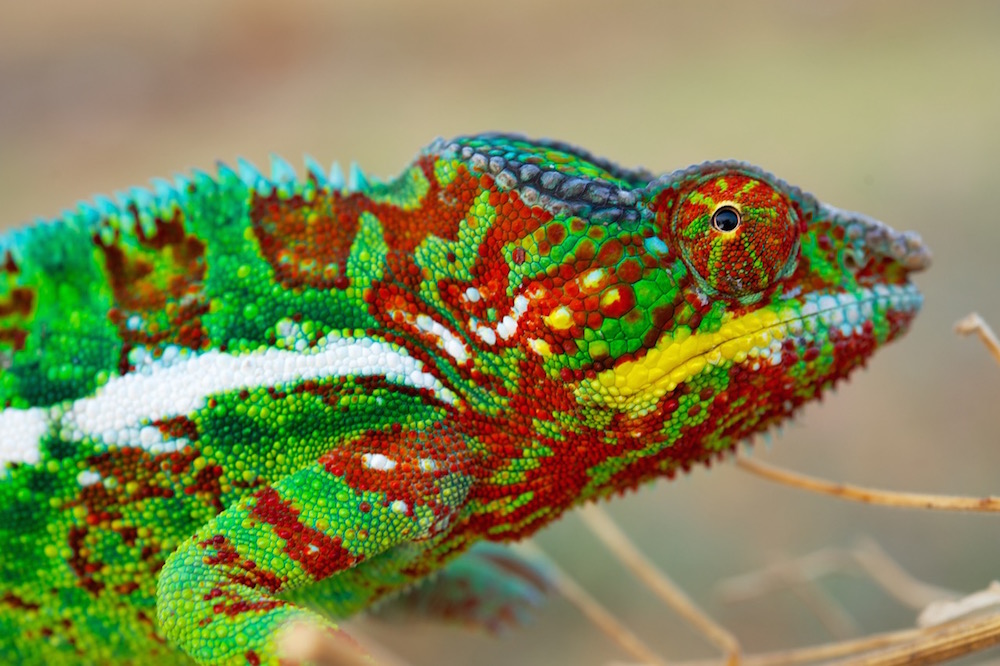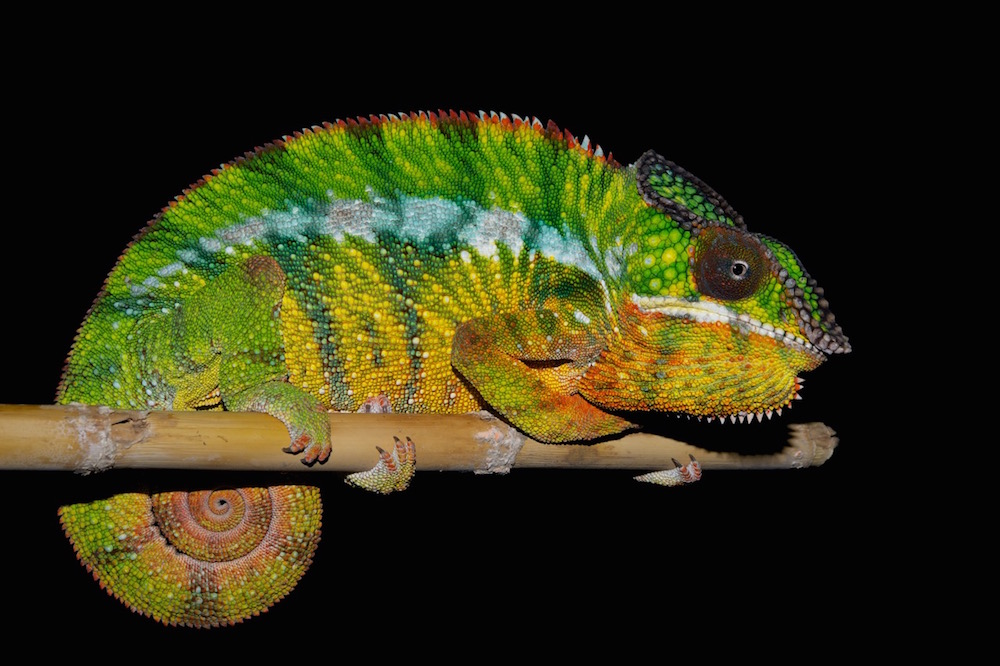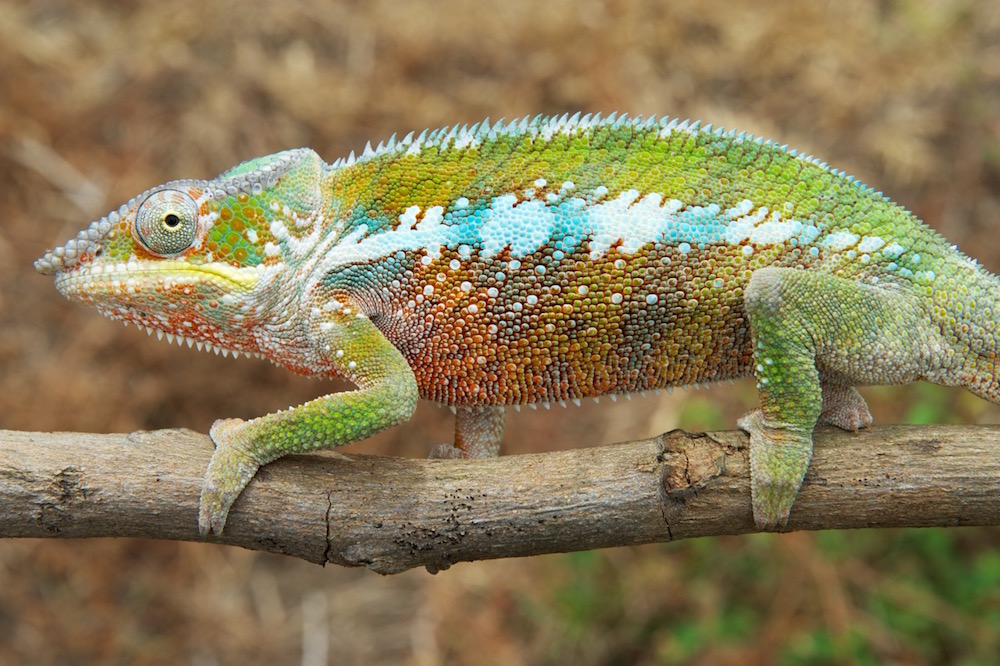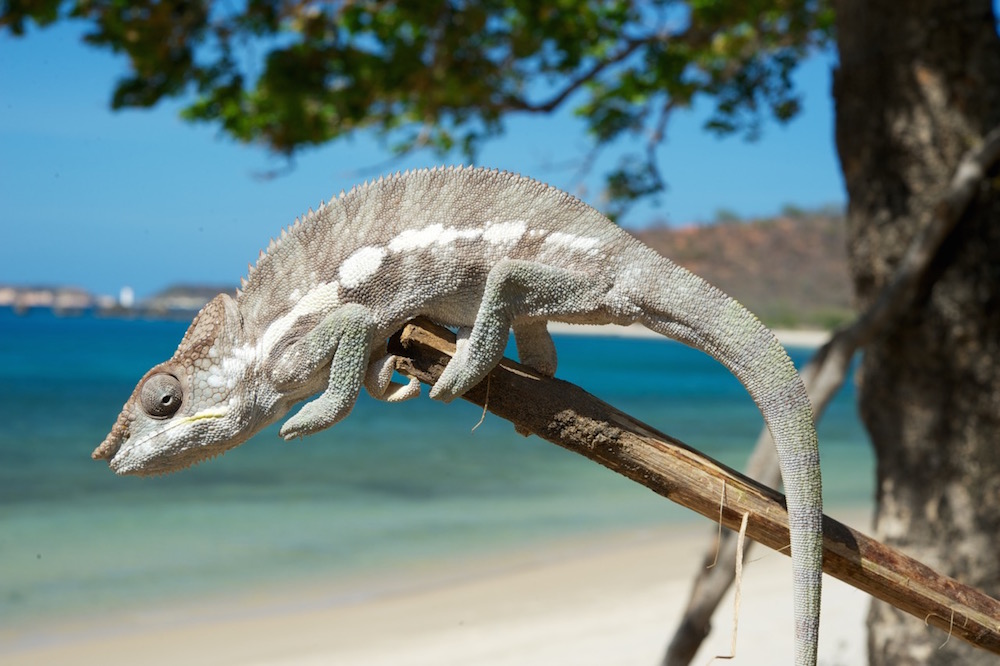Photos: 11 Colorful Chameleons of Madagascar
The panther chameleon, admired for its color-changing abilities, is not a single species, as scientists long thought. Researchers went on a road trip around Madagascar and found more than 300 panther chameleons. An analysis of blood samples and photos of each individual suggest that instead of one species, the panther chameleon is actually 11 distinct species that live in separate populations. The photos below (copyright Michel Milinkovitch) show the 11 different chameleon species. [Read the full story on the panther chameleons]
Madagascar native
The panther chameleon (Furcifer pardalis) is native to the island of Madagascar, a hotspot of biodiversity. Other native animals include lemurs, a catlike carnivore called a fossa, the giraffe weevil and many species of geckos.
Chameleon search
The researchers knew that chameleons live in different groups around the island of Madagascar. For the study, they drove around looking for chameleons, which tend to live "on trees and bushes both in relatively intact forests, and in forest edges and degraded habitat and is frequently found around human dwellings and plantations," the researchers said in the study.
Out on a limb
The researchers found more than 300 chameleons during their road trip. Each time they spotted a chameleon, they would take a blood sample and a high-resolution photo of the chameleon before setting it free.
Get the world’s most fascinating discoveries delivered straight to your inbox.
White chameleon
Surprisingly, the genetic analysis showed that the panther chameleon is actually 11 distinct species, the researchers said. There appears to be low levels of interbreeding among other populations, they added.
Marking its own
Mathematical analyses showed that each chameleon's markings could predict its genetic lineage. This supports the idea that each population is a different species with a different genetic background and distinct, colorful markings.
Keeping the species safe
Chameleons are popular in the pet trade, especially in the United States, Europe and Asia. The researchers created a "simple visual classification key" to help people involved in the pet trade make sure that they won't overharvest any of the 11 distinct chameleon species in Madagascar.
Bright colors
Male and female chameleons have different coloring. Female and juvenile chameleons are tan-brown with bits of pink or orange, while adult males have varying combinations of bright red, green, blue and yellow, the researchers said.
Open wide
The study's senior author, Michel Milinkovitch, published a study earlier this year on how chameleons change color. The reptiles have two layers of skin cells, the researchers said. The upper layer can change its structure, and hence its color. The bottom layer appears to reflect near-infrared light from the sun, and may help chameleons regulate their temperature on hot days, the researchers suggest.
Biodiversity rules
The new study shows that Madagascar is still teeming with hidden biodiversity, the researchers said.
Plethora of plants and critters
Madagascar is home to at least 15,000 species of plants, 300 species of birds, 300 species of amphibians and 400 species of reptiles (including 85 species of chameleons) and 100 species of freshwater fish, the researchers said. About 80 to 90 percent of these animals are native to Madagascar, and don't naturally exist anywhere else on Earth.
Threat to diversity
But the diversity of animals living on Madagascar is at risk. People are cutting down the forest for firewood and charcoal, which destroys the habitat of countless animals. The new study may help raise awareness about panther chameleons, and may aid in their survival, the researchers said.
Follow Laura Geggel on Twitter @LauraGeggel. Follow Live Science @livescience, Facebook & Google+.

Laura is the managing editor at Live Science. She also runs the archaeology section and the Life's Little Mysteries series. Her work has appeared in The New York Times, Scholastic, Popular Science and Spectrum, a site on autism research. She has won multiple awards from the Society of Professional Journalists and the Washington Newspaper Publishers Association for her reporting at a weekly newspaper near Seattle. Laura holds a bachelor's degree in English literature and psychology from Washington University in St. Louis and a master's degree in science writing from NYU.


